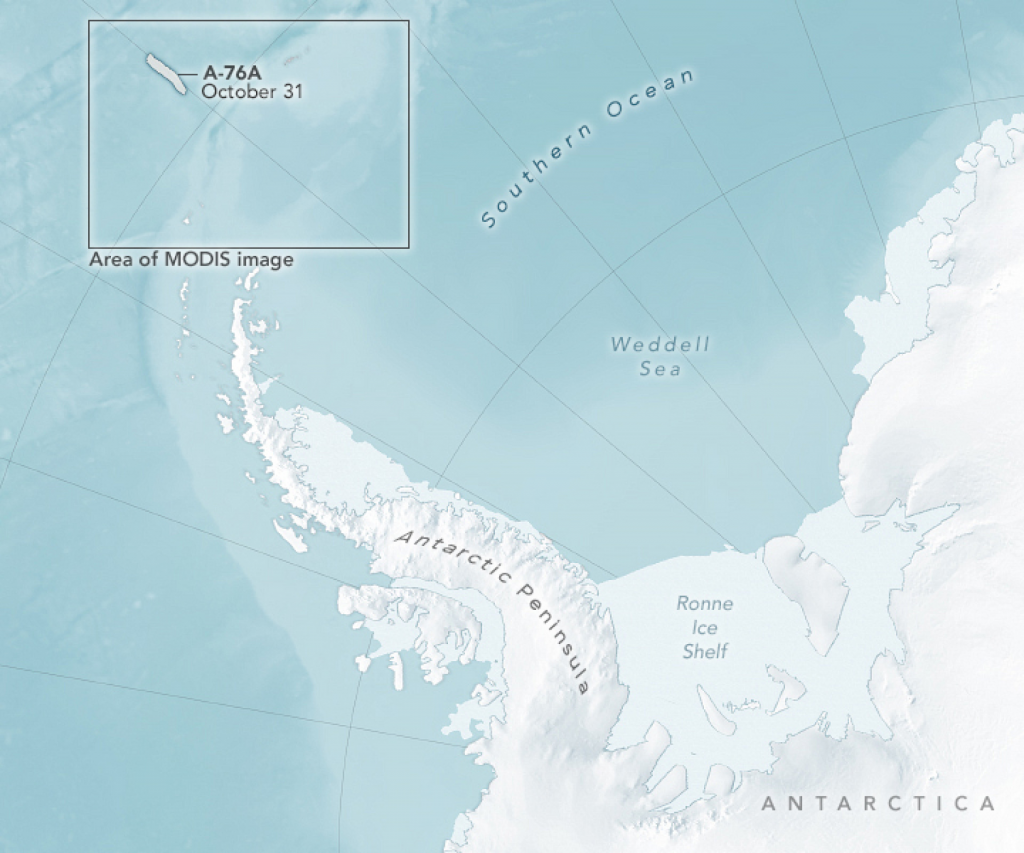The Antarctic iceberg A-76A, which is almost twice the size of London, is seen floating away toward the equatorial oceans. According to Interesting Engineering, experts believe the world’s largest iceberg is heading to its demise, as shown in satellite photographs.
The spectacular photographs captured by NASA’s Terra satellite show A-76A on its route to the Drake Passage, which is located between South America’s Cape Horn, Chile, and the South Shetland Islands of Antarctica and is one of the world’s most dangerous crossings for ships.

The parent iceberg, A-76, broke off Antarctica’s Ronne Ice Shelf in May 2021, making it the largest iceberg on earth. However, the iceberg lost its title after a month when it shattered into three identified parts. The largest of these fragments, Iceberg A-76A, is presently drifting 1,200 miles away in the Drake Passage.
Despite its long trip, the iceberg’s size has remained relatively constant. The US National Ice Center (USNIC) stated that A-76A was approximately 84 miles long and 16 miles wide in June 2021. According to USNIC, the berg’s size remained the same in October 2022.

It is unknown where A-76A will drift next. However, it is now more than 310 miles north of where it was in July 2022, when the European Space Agency’s Sentinel-1 satellite captured images of the berg traversing the Antarctic Peninsula.
Icebergs are often pushed east as they drift north by the strong Antarctic Circumpolar Current flowing through the Drake Passage. From there, icebergs frequently whip north toward the equator, where they swiftly melt in the warmer waters.


